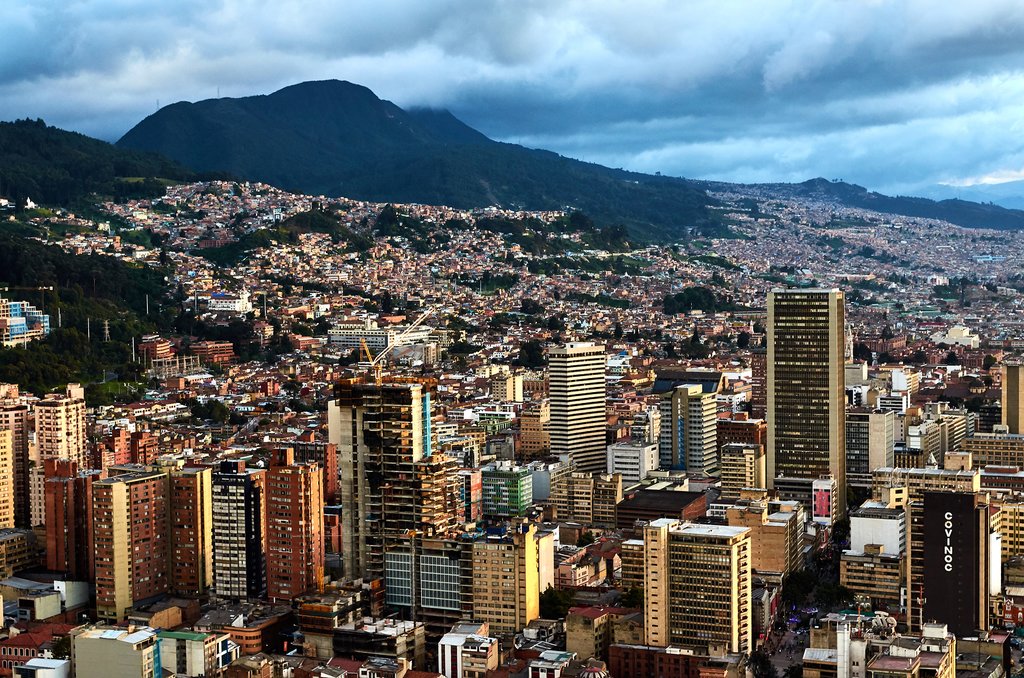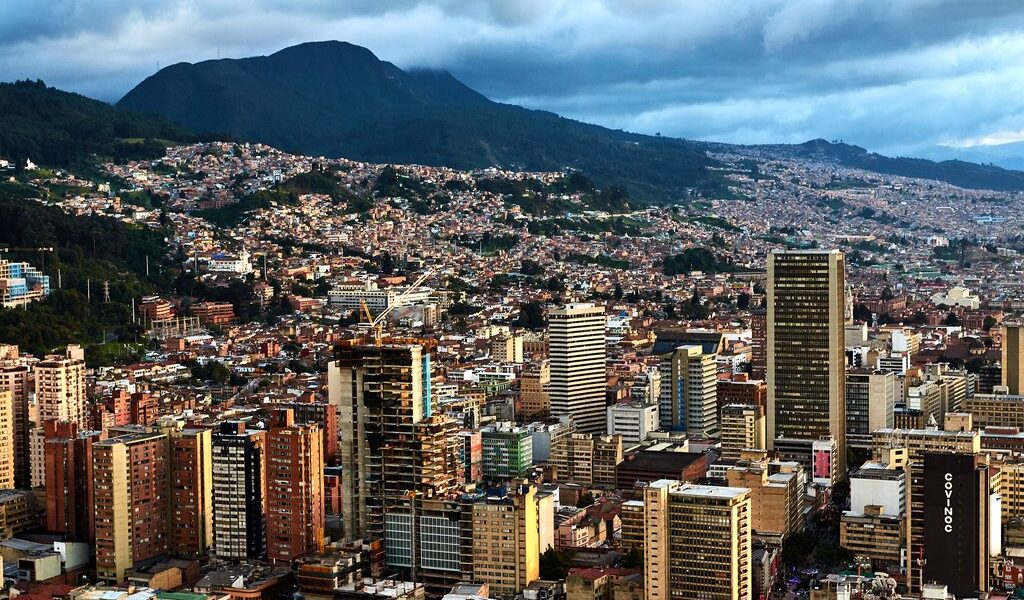
Bogotá, Colombia’s grand capital city, has no shortage of things to do. But travelers eager to escape the hustle and bustle of this sprawling metropolis will find as many attractions right outside of town. Here are our picks for the best.
## Unveiling the Treasures Beyond Bogotá: A Guide to Exquisite Day Trips
Bogotá, a vibrant metropolis brimming with cultural and historical significance, offers an immersive experience that could easily fill an entire vacation. From the energetic atmosphere of the **Zona Rosa** to the spiritual heights of **Cerro de Monserrate**, and the captivating colonial charm of the **La Candelaria** neighborhood, Bogotá presents a captivating blend of old and new. However, even within the embrace of such a remarkable Latin American capital, the desire for a change of scenery can arise. Fortunately, the environs of Bogotá boast an array of destinations that cater to diverse tastes, whether you seek cultural immersion, serene tranquility, or exhilarating culinary and nightlife experiences.
Venture beyond the city limits, and you’ll discover a tapestry of unique attractions, each offering a distinct perspective on Colombian culture and natural beauty. This comprehensive guide will illuminate your options, ensuring you select the perfect day trip to complement your Bogotá adventure.
Before embarking on these exciting excursions, remember to explore the wonders within Bogotá itself. Consider delving into the myriad activities and attractions that the capital has to offer, enriching your understanding of this dynamic city.
## Andrés Carne de Res: A Culinary and Theatrical Extravaganza
Every weekend, and on many weekdays, a steady stream of Bogatanos, the spirited locals of the capital, embark on a pilgrimage from Bogotá to the nearby rural town of **Chía**. Their destination? A place that transcends the definition of a mere restaurant – **Andrés Carne de Res**. This iconic establishment is more akin to a cultural institution, a spectacle that tantalizes the senses and elevates dining into an unforgettable experience. However, dismissing it as mere spectacle would be a disservice to the exceptional cuisine it offers.
This sprawling, hacienda-like eatery, reminiscent of a traditional Colombian estate, specializes in authentic country fare. Prepare to be amazed by the generous portions of *asado* (grilled meats), expertly seasoned and cooked to perfection, alongside mounds of savory roast *papas criollas* (mini potatoes), a regional delicacy.
Despite its considerable size, encompassing almost three square miles of property and boasting 11 distinct dining rooms capable of accommodating up to 3,300 patrons simultaneously, Andrés Carne de Res remains immensely popular. Reservations are strongly recommended to secure your place at this culinary mecca.
Andrés Carne de Res is more than just a restaurant; it’s an immersive theatrical performance. During the day, families are welcomed with open arms, with a dedicated children’s zone featuring clowns, engaging crafts, and delightful face painting. The restaurant’s staff adds to the vibrant atmosphere, donning an eclectic array of themed costumes, ranging from traditional gauchos and whimsical mimes to exotic jungle animals and captivating Mexican Day of the Dead characters.
As the sun sets, the restaurant transforms into a lively dinner-and-a-show nightclub, an experience perhaps best suited for adults. Patrons revel in the atmosphere, dancing, indulging in drinks, and generally carousing into the early hours of the morning.
For those unable to venture into the countryside, Andrés Carne de Res offers a satellite location, **Andrés DC**, situated in the heart of Bogotá’s vibrant Zona Rosa neighborhood. While smaller than its Chía counterpart, Andrés DC captures the same electrifying energy and boasts an equally eccentric interior design.
The four-story restaurant is a veritable feast for the eyes, with each floor representing a different realm. The top floor, known as *cielo* (heaven), offers an ethereal ambiance, while the bottom floor, *infierno* (hell), embraces a more devilish aesthetic. Regardless of your perceived fate, whether destined for eternal bliss or the fiery depths, a good time is guaranteed at Andrés DC.
## Honda: A Tranquil Colonial Escape
The relentless traffic, the overwhelming chaos, the seemingly endless nights – sometimes, a respite from the frenzy of Bogotá is essential. For those seeking tranquility, there is no better destination than the quaint colonial haven of **Honda**.
A three-and-a-half-hour bus journey northeast will transport you to this charming town. Arrive early, and you’ll be rewarded with the opportunity to wander its cobblestone streets, explore the bustling indoor produce market teeming with local flavors, and admire the stunning stone church, **El Alto Rosario**.
In recent years, Honda has witnessed a surge in its expat community, resulting in the emergence of new restaurants and hotels that cater to diverse tastes. The town’s strategic location at the confluence of the **Río Magdalena** and **Río Gualí** adds to its appeal, with picturesque old bridges spanning the waterways.
During the fishing season, which commences in February with the rise of the Magdalena River, fishermen flock to Honda from far and wide, drawn by the excellent conditions. For those yearning to escape Bogotá’s frequently frigid climate, Honda offers a welcome respite with its average temperature of 91°F.
## Laguna de Guatavita (Lake Guatavita): Unraveling the Legend of El Dorado
The mystical body of water known as **Laguna de Guatavita** is believed by some to be the birthplace of the legendary El Dorado. Regardless of its connection to the myth, the lake possesses an undeniable allure, steeped in history and captivating natural beauty.
Located within a forest-rimmed crater, Laguna de Guatavita once served as a sacred site for the indigenous Muisca people, who inhabited the region of **Cundinamarca** in Colombia. The descendants of this ancient civilization continue to thrive in the region today.
Gold held a significant place in Muisca culture, revered as an elemental force. In elaborate ceremonies, the Muisca *cacique* (chief) would adorn himself with gold dust, lead a procession to the center of the lake on a raft, and cast gold ornaments into the water as an offering to the goddess of Guatavita.
News of these natural riches eventually reached the ears of the Spanish conquistadors, igniting a fervent gold rush. While they never discovered El Dorado, the fabled lost city of gold, the lure of the lake persists. Even today, occasional mining ventures arise around the lake, the ambitious projects of 21st-century treasure hunters.
Numerous hotels and hostels offer half-day tours to Laguna de Guatavita, located approximately an hour and a half north of Bogotá. Consider combining your visit with an excursion to the awe-inspiring **Catedral de Sal** (Salt Cathedral), for a truly unforgettable experience.
## The Catedral de Sal (Salt Cathedral): An Underground Architectural Marvel
One of the most renowned attractions in the vicinity of Bogotá is the Catedral de Sal, the extraordinary church carved into a rock salt mine just outside the town of **Zipaquirá**, situated about 45 minutes north of Bogotá.
Rock salt has been extracted from this mine for centuries, dating back to the 15th century, even before the arrival of the Spanish. The concept of a church within the mine is not a recent development; miners had carved shrines into the salt formations long before the official Catedral de Sal was consecrated in 1954. It is no coincidence that the church was dedicated to Nuestra Señora del Rosario, the patron saint of miners.
Today, the Salt Cathedral stands as a major tourist attraction, encompassing three levels and spanning 25 acres. The interior corridors feature “14 stations of the cross,” each a shrine sculpted by a different artist and centered around a 13-foot-high crucifix. Within the cathedral, you’ll find sections dedicated to a choir, sacristy, and baptistry. Descend deeper into the church, reaching depths of up to 590 feet below the surface, and be awestruck by the towering 52-foot-high central cross.
A visit to the Salt Cathedral can be easily combined with a trip to the previously mentioned Laguna de Guatavita or a subsequent exploration of the colonial town of **Villa de Leyva**, detailed below.
## Villa de Leyva: A Journey Through Time
With an early start, Villa de Leyva makes for an exceptional day trip from Bogotá. Located in **Boyacá Department**, approximately three hours north of the capital, this exceptionally well-preserved colonial town, recognized as part of the Colombian National Network of Heritage Towns, serves as a popular retreat for Bogotanos. Its proximity to the site of the Battle of Boyacá, where Simón Bolívar, the celebrated “Liberator” of the independence movement, delivered a decisive blow to the Spanish forces in 1819, adds to its historical significance.
Visitors are drawn to Villa de Leyva’s picturesque white-washed colonial homes, nestled amidst the arid and windswept landscapes of the Andes. The primary attraction, however, is the expansive **Plaza Mayor**, the largest town square in Colombia, surrounded by buildings that date back to the 16th century. The plaza’s rough-hewn stones, at first glance, appear to be as old as the surrounding structures, but their installation dates back to the 1960s.
Along and around the Plaza Mayor, you’ll discover a wealth of delightful restaurants, bakeries, ice cream parlors, and artisanal shops. The hills surrounding the town offer excellent opportunities for hiking, and several fascinating archeological sites are located nearby. Among these is **Infiernito**, a unique monument to fertility featuring a collection of giant stone phalluses. The region surrounding Villa de Leyva is also ideal for cycling.
B-377

